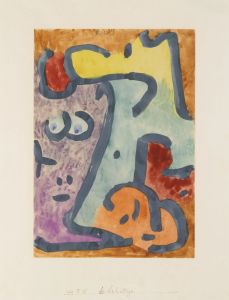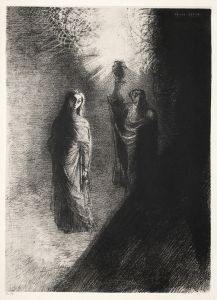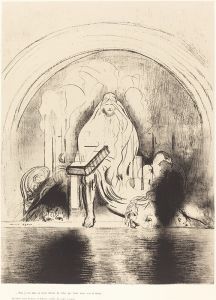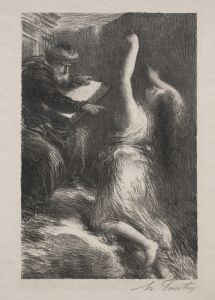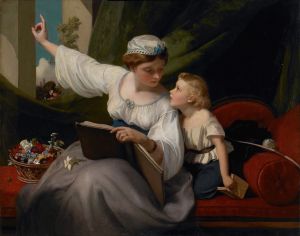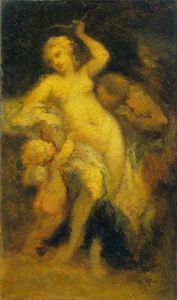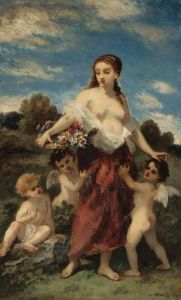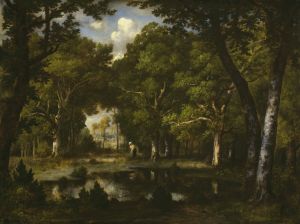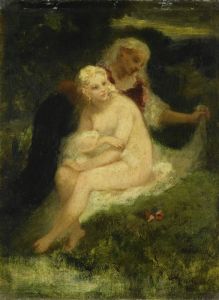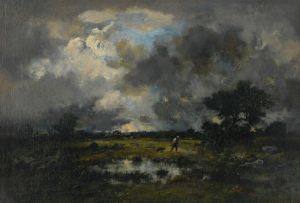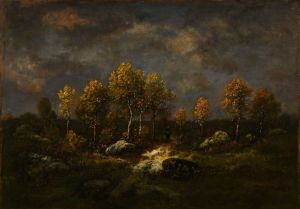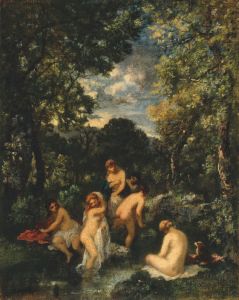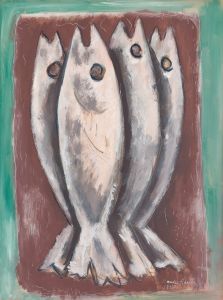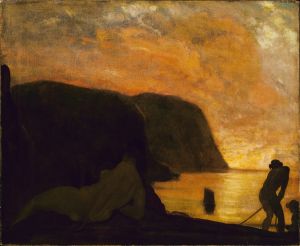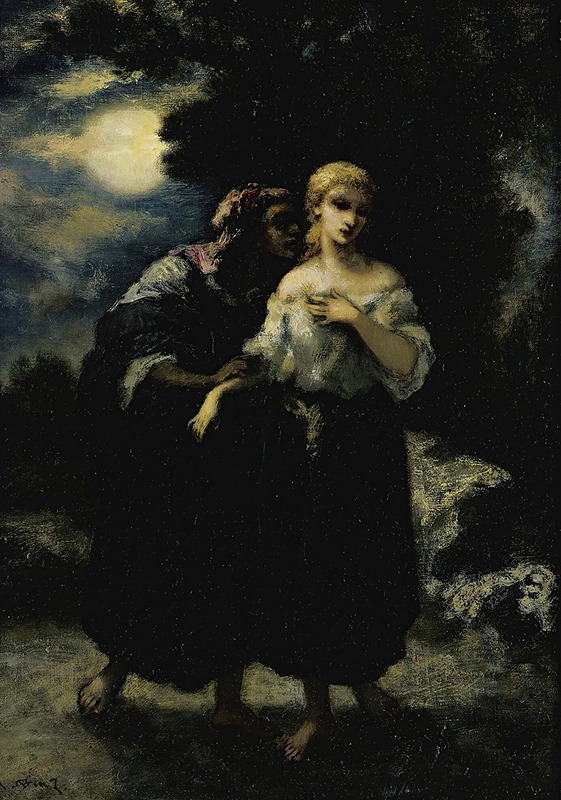
Le Malefice
A hand-painted replica of Narcisse-Virgile Diaz de La Peña’s masterpiece Le Malefice, meticulously crafted by professional artists to capture the true essence of the original. Each piece is created with museum-quality canvas and rare mineral pigments, carefully painted by experienced artists with delicate brushstrokes and rich, layered colors to perfectly recreate the texture of the original artwork. Unlike machine-printed reproductions, this hand-painted version brings the painting to life, infused with the artist’s emotions and skill in every stroke. Whether for personal collection or home decoration, it instantly elevates the artistic atmosphere of any space.
Narcisse-Virgile Diaz de la Peña was a prominent French painter of the 19th century, known for his association with the Barbizon School, a movement that emphasized naturalism and the depiction of the French countryside. One of his notable works is "Le Malefice," which translates to "The Spell" in English. This painting exemplifies Diaz de la Peña's skill in creating atmospheric and evocative landscapes, often imbued with a sense of mystery and romanticism.
"Le Malefice" is a captivating piece that showcases Diaz de la Peña's mastery of light and shadow, as well as his ability to convey a narrative through his art. The painting typically features a dark, wooded scene, with a central figure or figures that appear to be under the influence of a supernatural or mystical force. The use of rich, deep colors and intricate details draws the viewer into the scene, creating a sense of intrigue and wonder.
Diaz de la Peña was born in Bordeaux, France, in 1807, and he moved to Paris at a young age. He initially trained as a porcelain painter before transitioning to oil painting. His early works were influenced by Romanticism, but he later became associated with the Barbizon School, a group of artists who sought to break away from the formalism of academic art and instead focused on painting nature directly from life.
The Barbizon School was named after the village of Barbizon, near the Forest of Fontainebleau, where many of the artists, including Diaz de la Peña, gathered to paint. This movement was a precursor to Impressionism and played a significant role in the development of modern landscape painting. Diaz de la Peña's work, including "Le Malefice," reflects the Barbizon School's emphasis on capturing the transient effects of light and atmosphere in nature.
In "Le Malefice," Diaz de la Peña's use of chiaroscuro— the contrast between light and dark— is particularly striking. This technique helps to create a dramatic and almost theatrical effect, enhancing the sense of enchantment and otherworldliness in the scene. The painting's composition often leads the viewer's eye towards the central figures, who are typically depicted in a moment of tension or transformation, adding to the narrative quality of the work.
Throughout his career, Diaz de la Peña received recognition and acclaim for his contributions to the art world. He exhibited regularly at the Paris Salon, where his works were well-received by critics and the public alike. Despite facing personal challenges, including a lifelong struggle with a leg injury that he sustained as a child, Diaz de la Peña remained dedicated to his art and continued to produce a significant body of work until his death in 1876.
"Le Malefice" remains an important example of Diaz de la Peña's artistic legacy, showcasing his ability to blend naturalism with elements of fantasy and storytelling. His work continues to be celebrated for its technical skill, emotional depth, and contribution to the evolution of landscape painting in the 19th century.





